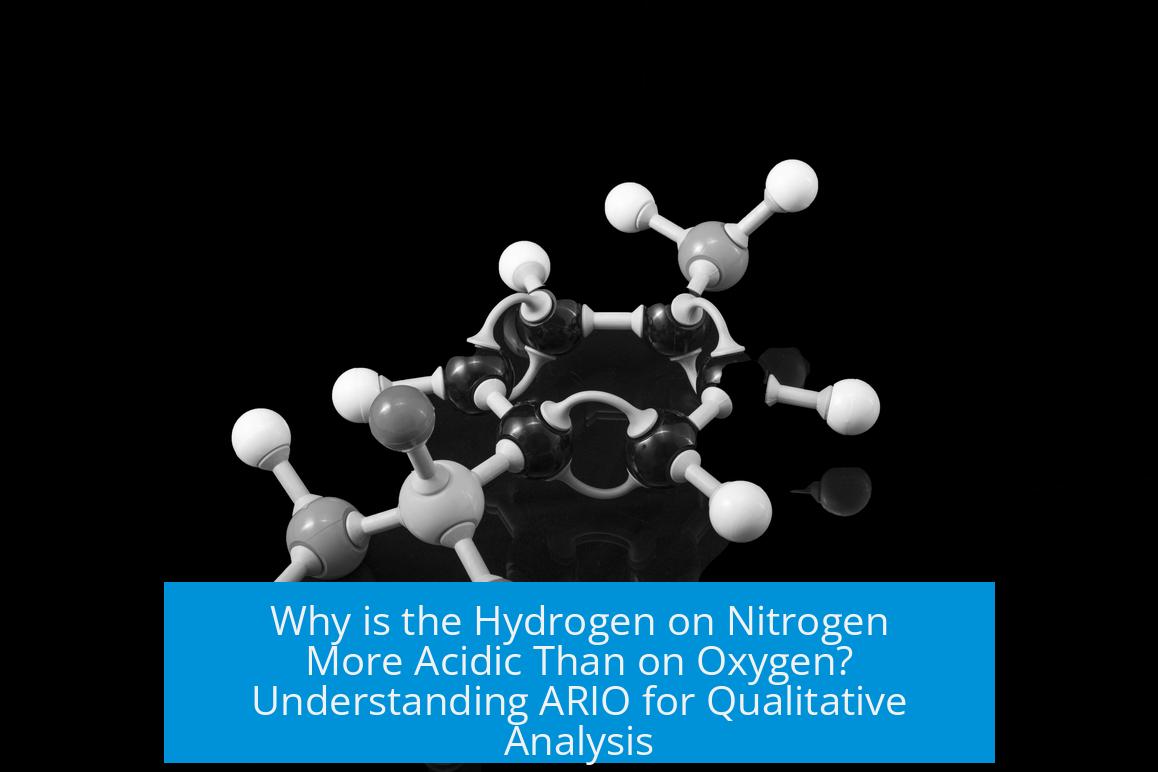Why Is the Hydrogen Attached to Nitrogen More Acidic Than That Attached to Oxygen?
The hydrogen atom bonded to nitrogen (N) in this compound is more acidic than the hydrogen bonded to oxygen (O) because removing the N-H proton yields a neutral, more stable species, whereas removing the O-H proton generates a negatively charged, less stable species.
Formal Charge and Stability
Upon deprotonation:
- Removing the H from nitrogen leads to a species with a formal charge of zero.
- Removing the H from oxygen produces a species with a -1 formal charge.
This difference greatly influences acidity. Neutral species formed after N-H deprotonation experience less charge separation and greater stability. In contrast, the negative charge formed at oxygen remains localized and destabilized.
Electron Density and Electronegativity Considerations
Nitrogen in the protonated state often carries a positive formal charge, making it electron-deficient. This pulls electron density away from the bonded hydrogen, increasing its partial positive character. The result is a more electropositive hydrogen that is easier to lose as a proton.
Oxygen in an alcohol or neutral state does not carry positive charge, leading to weaker polarization of the O-H bond. Therefore, the O-H hydrogen is less acidic in this context.
Qualitative Determination Without pKa Values
Instead of referencing numerical pKa tables, acidity can be evaluated by analyzing:
- Formal charge changes: Observe species charges after proton loss.
- Charge stabilization: Evaluate if the resulting charged species is stabilized or destabilized.
- Electron density shifts: Consider electronegativity and charge effects on the polarizing ability of the atom bonded to hydrogen.
For example, protonated amines typically have lower pKa values (stronger acidity) than neutral alcohols, consistent with these principles.
Relation to ARIO (Atom, Resonance, Induction, Orbital) Method
The ARIO framework is often used to rationalize acidity by considering:
- Atom: Electronegativity and size of the atom bearing the proton.
- Resonance: Delocalization of negative charge after deprotonation.
- Induction: Electron-withdrawing effects stabilizing negative charge.
- Orbital: Hybridization impacts on acidity.
Here, the key factor resembles the Atom effect: the formal charge and electronegativity of nitrogen and oxygen define the acidity pattern. Resonance and induction effects are less relevant if no additional stabilizing groups exist.
Key Takeaways
- Deprotonation of N leads to a neutral, stable species; deprotonation of O leads to a charged, less stable species.
- Positive formal charge on nitrogen increases polarization of the N-H bond, enhancing acidity.
- Qualitative acidity assessment involves formal charge analysis and charge stability rather than just pKa values.
- ARIO principles overlap with this reasoning, especially the importance of atomic properties and charge effects.
Why is the hydrogen attached to nitrogen more acidic than the hydrogen attached to oxygen in this compound?
When nitrogen loses its hydrogen, its formal charge becomes zero, which is more stable. Losing hydrogen from oxygen creates a negative charge, making the species less stable and less acidic.
How does formal charge affect the acidity of hydrogens on nitrogen vs oxygen?
Removing H from nitrogen results in a neutral species, stabilizing it. Removing H from oxygen forms a negatively charged species, causing charge separation and instability, lowering acidity.
How can I determine the acidity difference qualitatively without looking up pKa values?
Consider changes in formal charge, charge stability, and electron density shifts. Check if deprotonation creates or removes charge and evaluate electronegativity effects on bonded hydrogens.
How does electron density on nitrogen influence the acidity of its attached hydrogen?
Nitrogen’s positive charge pulls electron density away from the hydrogen, making that hydrogen more electropositive and easier to lose.
Can the ARIO method be used to assess why N-H is more acidic than O-H?
While ARIO is not detailed here, the qualitative reasoning aligns with its principles: atom electronegativity, resonance, induction, and orbital effects help explain acidity differences.





Leave a Comment